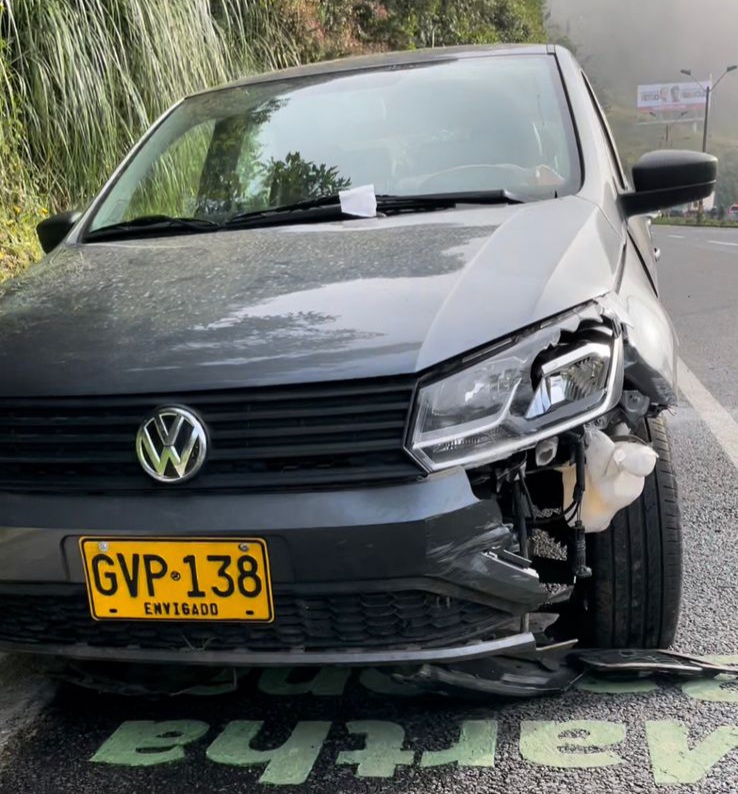Teenage reckless driving a growing concern
Dangerous driving is a common behavior in our society, many students engage in impulsive and irresponsible driving practices, putting themselves and others at risk.
For many teenagers, getting their license is an important moment in their lives, giving them more independence and freedom. However, many are unaware of the amount of responsibility needed in order to get around safely.
Students who do not develop their judgment and decision-making abilities may find driving a challenge, putting others at risk. According to Agencia Nacional de Seguridad Vial, teenagers, aged 16–17 and young adults, aged 18–29 have the highest overall rates of crash involvement per mile driven.
“In total, I have been part of seventeen traffic accidents. Five of these accidents have been totaled, the other 12 have been minor accidents,” Matias Saldarriaga, Grade 11, said.
Student accidents
TCS is located in El Alto de las Palmas, giving students access to the road with the second most fatal crashes in the country, according to El Colombiano. A two-lane road is a common place for TCS students to speed up and end up in an accident.
David Fishman, Grade 11, drove home down Palmas. The road was wet and he tried to overtake a car in a curve, losing control. The car skidded twice until he finally crashed against a rock at the side of the road that opened his airbags.
“I felt a lot of adrenaline, also fear, I didn’t know what had happened because at the moment one is not as conscious of what happened, the important thing is that nothing serious happened and we are all fine,” Fishman said.
Another student drove in Palmas near Mall Viva. There was a trail of oil and the car skidded ending up on the other side of the road. The crash was strong enough to trigger the car’s airbags.
“At the beginning when I was younger, say a year, a year and a half ago, I was the typical crazy person who went fast and all the way around. But after all the accidents I have had, I have learned to control myself more, I am much more prudent,” Saldarriaga said
Teens and alcohol
Drinking alcohol is dangerous, and it is even riskier for teenagers that are still developing their decision-making and driving skills. According to a 2017 National Highway Traffic Service Administration survey, almost 24% of all fatalities in car accidents among young drivers are caused by alcohol use.
“Alcohol among minors is not something rare. Adolescents are very bad at handling it and controlling themselves especially when they are already feeling the effects. The legal age to drink here is 18, I know of many cases of teenagers under this age with and without a license that has crashed due to drinking,” Juan Gabriel Gallón, Grade 11, said.
Peer pressure
Peer pressure is a powerful force that can influence a teen’s decision-making process. Pressure can be direct or indirect, leading teens towards bad decision-making. According to a study by the AAA Foundation for Traffic Safety, drivers aged 16-24 are nearly three times more likely to engage in dangerous driving practices including speeding, distracted driving, and not wearing a seatbelt. Speeding is the most common.
“My worst crashes have been accompanied by friends in the car. I think having a passenger greatly influences the way I drive. Now after so many crashes, I know that if I go with people it is more important to be prudent and pay more attention to the cars around,” Fishman said.
Distracted driving
Distracted driving is one of the main causes of car accidents. There are many types of distractions both inside and outside the car. Teenagers are far more likely to get distracted and with less experience driving, accidents are more likely to happen. According to NHTSA in 2021, 3,522 people were killed in crashes involving distracted drivers.
“The two accidents where I was guilty were not because of recklessness, it was more being distracted combined with bad luck, what my parents had to say was not so bad, they went more along the path of only cans being destroyed,” Saldarriaga said.
It is after crashing that students become aware of their actions. Several TCS students affirm changing their reckless behaviors after crashing.
“In the crash, I was going about 60. The problem was the road, since then I drive much more responsibly, even more now because I have my new car,” Fishman said.
Work Cited
Peer pressure and risky driving: Development of a new scale. (n.d.). Journal of Safety Research, 82, 48–56. https://doi.org/10.1016/j.jsr.2022.04.005
Cifras año en curso | ANSV. (2023, April 18). Agencia Nacional de Seguridad Vial. Retrieved April 21, 2023, from https://ansv.gov.co/es/observatorio/estad%C3%ADsticas/cifras-ano-en-curso
Distracted Driving Dangers and Statistics. (n.d.). NHTSA. Retrieved April 21, 2023, from https://www.nhtsa.gov/risky-driving/distracted-driving
Gross, A. (2022, December 8). Dangerous driving behavior rise, says AAA. AAA Newsroom. Retrieved April 21, 2023, from https://newsroom.aaa.com/2022/12/going-in-reverse-dangerous-driving-behaviors-rise/
Más de 2.000 accidentes al año por conductores ebrios. (2012, December 26). Portafolio. Retrieved April 21, 2023, from https://www.portafolio.co/economia/finanzas/000-accidentes-ano-conductores-ebrios-92186
Teen Drivers and Passengers: Get the Facts | Transportation Safety | Injury Center | CDC. (2022, November 21). Centers for Disease Control and Prevention. Retrieved April 21, 2023, from https://www.cdc.gov/transportationsafety/teen_drivers/teendrivers_factsheet.html




